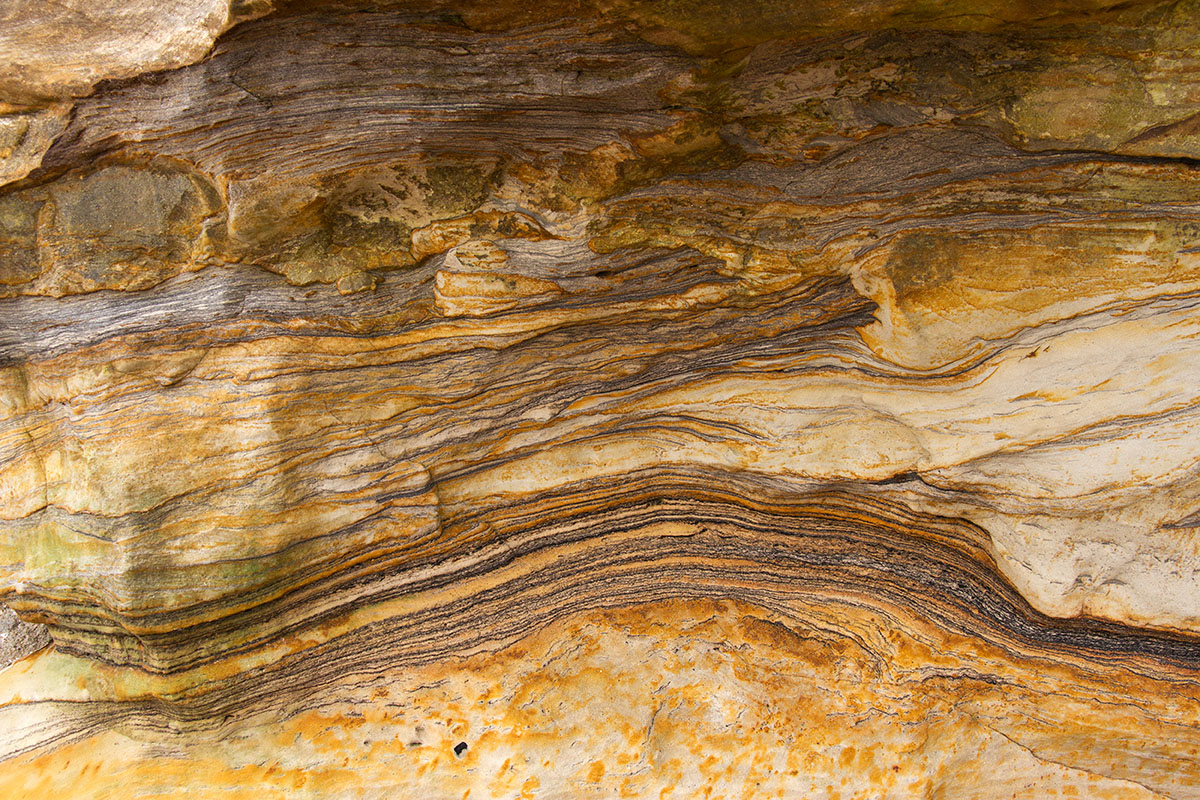
< Back
sedimentary rock
Definition
Sedimentary rock is a type of rock that is formed from the accumulation of sediment. Sediment is made up of particles of rocks, minerals, and organic matter that have been transported by wind, water, or ice. Sediment can be deposited in many different places, such as rivers, lakes, oceans, and even on the ground.
Sedimentary rocks are classified according to the way that they are formed. There are three main types of sedimentary rocks: clastic sedimentary rocks, chemical sedimentary rocks, and organic sedimentary rocks.
Clastic sedimentary rocks are made up of fragments of other rocks and minerals. The fragments can be sand-sized, silt-sized, or clay-sized. Clastic sedimentary rocks are the most common type of sedimentary rock.
Chemical sedimentary rocks are made up of minerals that have been precipitated from water. The minerals can be precipitated from seawater, freshwater, or even from groundwater. Chemical sedimentary rocks are less common than clastic sedimentary rocks.
Organic sedimentary rocks are made up of the remains of organisms. The remains can be the shells of marine organisms, the bones of land animals, or even the remains of plants. Organic sedimentary rocks are the least common type of sedimentary rock.
Sedimentary rocks are important because they can be used to learn about the history of the Earth. By studying the types of sedimentary rocks that are found in different places, scientists can learn about the different environments that existed in the past. Sedimentary rocks can also be used to learn about the climate and the tectonic activity that has occurred in the past.
How can the word be used?
Sedimentary rocks are formed from the accumulation of sediment.

Different forms of the word
Noun:
- a type of rock that is formed from the accumulation of sediment.
Etymology
The word "sedimentary rock" is a compound word, consisting of the words "sediment" and "rock".
The word "sediment" comes from the Latin word "sedimentum", which means "that which settles".
The word "rock" comes from the Old English word "roc", which also means "rock".
The first recorded use of the word "sedimentary rock" in English was in the 17th century.
The word "sedimentary rock" is an English word, and it is not related to any other languages.
Question
How is sedimentary rock formed?
AQA Science Exam Question and Answer
Question:
Describe the formation and characteristics of sedimentary rocks, highlighting the role of pressure, compaction, and cementation in their creation.
Answer:
Sedimentary rocks are a crucial part of Earth's geological history, forming through a process involving pressure, compaction, and cementation. Initially, sediments, which can be fragments of pre-existing rocks, mineral grains, or organic matter, accumulate in layers over time. As more layers accumulate, the weight from the overlying sediments exerts pressure on the lower layers.
Compaction occurs as these layers are squeezed together under pressure, causing the sediments to become more densely packed. This process expels water from the sediments, further compacting them and reducing pore space.
Cementation follows compaction, where minerals precipitate and fill the remaining pore spaces between the particles. Common cementing minerals include calcite, silica, and iron oxides. These minerals act as a natural "glue," binding the sediments together and transforming them into solid rock.
The characteristics of sedimentary rocks are often influenced by the type of sediments and the conditions under which they formed. Clastic sedimentary rocks, like sandstone and shale, form from the compaction and cementation of mineral and rock fragments. Chemical sedimentary rocks, such as limestone and rock salt, result from the precipitation of minerals from solution. Organic sedimentary rocks, like coal and limestone, develop from the accumulation and compression of organic materials.